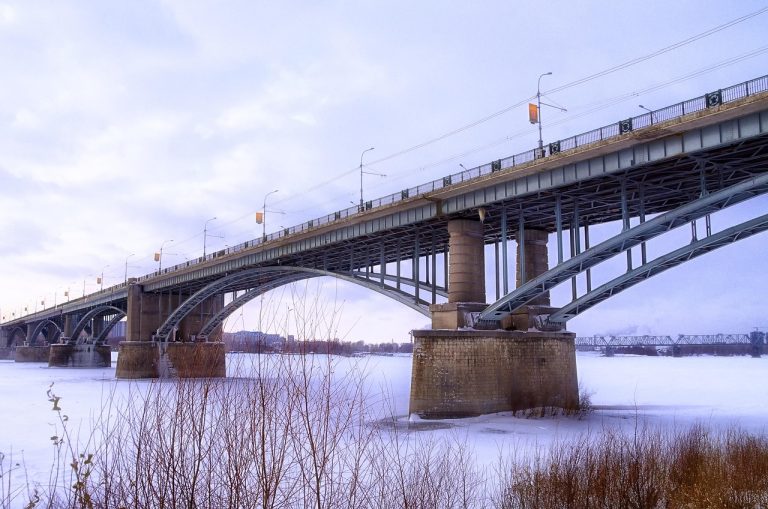Armenia’s foreign policy is evolving post-2023’s defeat in Nagorno-Karabakh and Moscow’s perceived inaction. The government is now testing the Armenia-Russia alliance while exploring options in Europe, the United States, China, and the region. This shift is central to understanding the dynamics of armenia russia relations and Armenia’s long-standing security dependence.
Prime Minister Nikol Pashinyan and Foreign Minister Ararat Mirzoyan affirm EU accession as official policy. Visa facilitation is progressing, with a formal application seemingly imminent.
Concurrently, Yerevan has signed a strategic partnership with China at the August 31, 2025 SCO summit in Tianjin, aiming for capital and leverage despite doubts about Beijing’s reliability.
Domestic politics introduce additional strain. Mid-2025 polls by MPG and the International Republican Institute reveal low cabinet approval and rising street mobilization. Influential figures, church-state tensions, and contested local power centers influence decisions on the CSTO freeze and EAEU exit. These moves could redefine the Armenia-Russia alliance and recalibrate their relations.
The coming months will challenge stability, deterrence, and economic planning. Yerevan seeks to leverage new ties for tangible benefits while navigating Armenia’s security dependence and post-Soviet legacies. Success will depend on credible defense arrangements, trade corridors, and the political will to implement challenging reforms.
Overview of Post-Soviet Relations and Shifting Geopolitics
Armenia’s policies have been deeply intertwined with Moscow’s influence, starting in the early 1990s. This relationship has defined their cooperation in defense, trade, and transportation. The Russo-Armenian partnership has provided a solid foundation for military bases, energy agreements, and market access. It has also influenced Armenia’s security doctrine and budget allocations.
Today, Armenia is reassessing its ties with Russia. Leaders in Yerevan are weighing the pros and cons as geopolitical dynamics change. The country is exploring new avenues with Europe, the United States, China, and neighboring states, diversifying its economic and security partnerships.
From Russo-Armenian Strategic Partnership to Diversification
For over three decades, the Russo-Armenian partnership has been the cornerstone of Armenia’s defense and trade strategies. Armenia’s security has relied heavily on Russian guarantees and favorable energy prices. Yet, in 2020 and 2023, Yerevan started to explore alternative options.
Yerevan has strengthened ties with the European Union, signing the CEPA agreement. Discussions with Beijing are advancing towards a strategic partnership within the Shanghai Cooperation Organization. While maintaining economic ties with Russia, Armenia is also considering alternative suppliers and trade routes.
Impact of the 2023 Nagorno-Karabakh Outcome on Regional Alignments
The 2023 loss of Nagorno-Karabakh to Azerbaijan marked a significant turning point. Armenian officials have expressed disappointment over the lack of promised aid, questioning the effectiveness of deterrence. This has led to a renewed focus on building partnerships with countries that can offer financial, military, and logistical support.
Yerevan’s regional messaging has also undergone a transformation. The country has strengthened ties with the United States through strategic agreements and the TRIPP framework. This shift has influenced Armenia’s approach to defense, border management, and regional relations.
Balancing Ties With Russia, the EU, China, and Regional Neighbors
Armenia’s policy now aims to balance its relationships with various partners. While maintaining critical ties with Russia, Armenia is also pursuing regulatory alignment with the EU under CEPA. This seeks to attract investment and improve standards.
China is emerging as a key partner for Armenia, focusing on capital and infrastructure projects within the SCO framework. Security expectations from China are modest. Armenia is also engaging in cautious normalization with Turkey and pragmatic dialogue with Azerbaijan. Coordination with Iran emphasizes open borders and freight resilience, enriching Armenia’s post-Soviet relations without undermining its partnership with Russia.
Armenia Russia Relations
In a year of recalibration, the debate on armenia russia relations intensifies. The alliance continues to influence borders, trade, and defense. Yet, policy decisions now consider risks, costs, and leverage. Leaders are torn between Armenia’s security dependence on Russia and exploring new ties with the European Union and regional neighbors.
Historical Security Dependence and Perceptions of Unmet Expectations
For three decades, Armenia’s security has been deeply tied to Russia. This includes a Russian base in Gyumri and membership in Moscow-led blocs. The Armenia-Russia alliance is built on agreements covering air defense, border protection, and logistics.
The 2023 fighting in Nagorno-Karabakh highlighted a perceived lack of support from Russia. This led to a reevaluation of Armenia’s security dependence on Russia. The decision to freeze CSTO participation and the debate over EAEU membership signaled a desire for new options.
Public Sentiment and Political Pressures Affecting Moscow–Yerevan Ties
Domestic pressures are high. MPG polling in August 2025 showed 77% disapproval of the government’s foreign policy. Parties like Civil Contract and Samvel Karapetyan’s movement garnered significant support. Protests and high-profile detentions have kept foreign policy in the spotlight.
These factors influence Armenia’s approach to normalization with Azerbaijan and Turkey. They also shape views of the Armenia-Russia alliance. Parties view these agreements as either a safety net or a constraint on sovereignty.
How Post-War Realities Recalibrate Alliance Assumptions
Post-war pragmatism emphasizes redundancy in security and trade. Yerevan seeks to maximize cooperation with Russia while exploring ties with Brussels and regional partners. Armenia’s security dependence is reassessed through budgets, timelines, and measurable outcomes.
This shift leads to fewer automatic alignments and more conditional commitments. The Armenia-Russia alliance remains significant but is negotiated more tightly. Defense, energy, and transit agreements are reviewed for their relevance under new conditions.
Security Architecture: CSTO Membership, EAEU Links, and Defense Posture
Armenia’s security landscape is undergoing significant changes following a tumultuous period in its post-Soviet relations. The country now faces a delicate balance between ensuring national security, accessing new markets, and maintaining the trust of its allies. The path forward is uncertain, but the urgency of the Armenia-Russia alliance is clear.
CSTO Status, Freeze Announcements, and Implications for Deterrence
Prime Minister Nikol Pashinyan has stated that Armenia no longer considers itself part of the CSTO. This decision comes after Armenia froze its participation and indicated no intention to rejoin. The move has raised questions about Armenia’s ability to respond to crises and its legal protection under a collective defense agreement.
Armenia is now reviewing its bilateral agreements and emergency protocols to ensure a robust defense posture. The country is exploring new defense partnerships, including with France and the UK, while maintaining dialogue with Russia. Ensuring rapid assistance, interoperable equipment, and early warning systems is critical for effective deterrence.
EAEU Economic Integration Versus Prospective EU Pathway
Yerevan is weighing the option of leaving the Eurasian Economic Union to pursue an EU membership path. This decision is complicated by the incompatibility of the two economic frameworks. Armenia has benefited from EAEU membership, which has provided customs preferences and labor mobility. A sudden exit could lead to tariff shocks and compliance costs.
Policy makers are considering various options, including transitional tariff schedules and regulatory alignment with EU standards. They aim to balance market access, technology transfer, and financial stability. Any decision will depend on investment timelines, logistics corridors, and the resilience of supply chains.
Russian Military Base in Armenia and Evolving Defense Cooperation
The Russian military base in Armenia operates under bilateral agreements, despite a reassessment of cooperation within the Armenia-Russia alliance. Public debate has increased following perceived shortcomings in 2023. Armenia is diversifying its defense cooperation without severing ties with Russia.
Yerevan is acquiring air defense and artillery systems from France and exploring training opportunities with the UK. The country is updating its command-and-control systems, border surveillance, and ammunition sourcing to address new threats. This approach maintains the status quo with Moscow while opening up to new partnerships.
Armenia-Russia Economic Ties and Investments
Trade, finance, and labor flows connect Yerevan and Moscow, yet a shift in policy mood is underway. Armenia-Russia economic ties continue to influence daily commerce and banking access. Yet, diversification is transitioning from debate to action. Officials are weighing compliance risks and market access while maintaining channels through Armenia-Russia bilateral agreements.
Russian Investments in Armenia and Trade Dependencies
Russian investments in Armenia are evident in retail, telecom, and finance. Brands like VTB, Beeline, and Magnit are present or have been in the market. Supply chains under the EAEU support exporters and importers, and customs processes favor familiar partners.
New compliance checks impact procurement and payments. Firms assess their exposure to sanctions while keeping contracts backed by Armenia-Russia bilateral agreements. Procurement managers are diversifying vendors to mitigate delays and price volatility.
Energy, Remittances, and Logistics Corridors Under Review
Energy contracts linked to Russian gas and fuel are critical for pricing and household costs. Remittances from Armenian workers in Russia support consumption and small business cash flow. Banks are testing alternative rails to reduce shocks.
Regional routes are evolving. Grain is moving from Kazakhstan to Armenia via Azerbaijan, signaling changes in logistics corridors. The easing of certain transit limits points to practical fixes that reduce trucking times and storage fees.
Potential Reorientation Toward EU-Linked Value Chains
Visa facilitation with Brussels and talks of a deeper EU track suggest a shift to European standards. Exporters are exploring rules-of-origin compliance, while tech and agrifood firms are mapping certifications for new tenders.
Diversification also involves the TRIPP context and U.S.-Armenia commercial work, alongside opportunities tied to the Armenia–China strategic partnership announced on August 31. For many companies, the baseline remains Armenia-Russia economic ties. Yet, planning now blends Russian investments in Armenia with EU screens and resilient logistics corridors.
| Pillar | Current Exposure | Adjustments Under Way | Policy Anchors | Business Implication |
|---|---|---|---|---|
| Trade & Supply Chains | EAEU-centered sourcing; legacy distributors | Vendor diversification; compliance audits | Armenia-Russia bilateral agreements; customs reforms | Lower single-market risk; modest cost uptick |
| Investment & Finance | Russian investments in Armenia across banking and retail | Mixed funding from EU, U.S., and Asian lenders | Prudential oversight; sanctions screening | Broader credit options; slower due diligence |
| Energy & Utilities | Gas and fuel contracts with Russian suppliers | Efficiency upgrades; pilot deals with alternative traders | Tariff regulation; storage and reserve rules | Price stability goals; hedging against disruptions |
| Remittances | Significant flows from workers in Russia | New transfer rails; currency risk buffers | Banking compliance; cross-border payment norms | Smoother inflows; reduced FX exposure |
| Transit & Logistics | Traditional north–south routes via Russia | Kazakhstan–Azerbaijan grain route; multimodal trials | Transit facilitation talks with neighbors | Faster delivery; diversified logistics corridors |
Domestic Politics and Their Foreign Policy Ripple Effects
Domestic strain is narrowing policy options and testing credibility abroad. Surveys by MPG in August 2025 showed 77% disapproval of the government’s approach. Civil Contract polled at 17.3%, and a movement linked to Samvel Karapetyan at 13.4%. The International Republican Institute’s June findings echoed the mood, complicating debates over Armenia security dependence and the future of the Armenia-Russia alliance.
Low Approval Ratings, Contested Local Power Centers, and Street Mobilization
Local contests amplify national tensions. Civil Contract nearly lost Yerevan in 2023; in March 2025 it lost Gyumri and Parakar. Gyumri’s opposition mayor Vartan Ghukasyan was detained in a high-profile police operation that sparked clashes.
Parakar’s opposition mayor was shot dead five months after taking office, reportedly tied to a personal feud. Vanadzor has lacked a mayor for four years, and Etchmiadzin’s polls add pressure.
These flashpoints drain administrative focus and limit bandwidth for talks on post-Soviet relations. They also harden positions on the Armenia-Russia alliance and complicate choices tied to Armenia-Russia economic ties.
Church-State Tensions and Narratives on Alliance Choices
Church-state friction widened after clergy detentions on coup charges and warnings that opposition figures would defend Catholicos Karekin II against removal.
The rift fuels competing stories about sovereignty and Armenia security dependence. Some clerics and politicians argue for tighter bonds with Moscow and even a Union State track, while others resist, citing legal norms and institutional autonomy.
These narratives reach foreign desks. They shape how partners read Yerevan’s steadiness on post-Soviet relations and the terms of any recalibration within the Armenia-Russia alliance.
Election Dynamics Shaping External Alignments and Stability
Prime Minister Nikol Pashinyan’s push to found a “fourth republic,” end long-running conflict, and normalize ties with Azerbaijan and Turkey faces organized resistance.
With Civil Contract under pressure and new entrants rising, coalition math could shift with each vote. That uncertainty affects timelines for deals with Brussels and Washington and tests the risk calculus of investors tracking Armenia-Russia economic ties.
Campaign rhetoric also sets red lines. Harder lines toward Moscow or the West echo through security briefs and trade plans, reinforcing how election cycles channel Armenia security dependence and the path of post-Soviet relations without resolving either.
Wider Diplomatic Reorientation: EU, US, China, and Regional Tracks
Armenia is expanding its foreign policy horizons, balancing risk and opportunity. It aims to forge ties with Brussels, Washington, Beijing, and regional capitals. This strategy seeks to enhance trade, transit, and political cooperation without sacrificing flexibility.
EU Accession Intent, Visa Facilitation, and CEPA-Based Cooperation
Foreign Minister Ararat Mirzoyan has declared EU accession a state policy. Armenia plans to apply soon, possibly next month or year. CEPA and the EU-Armenia Partnership Agenda are expanding cooperation in governance, trade, and digital services.
Visa facilitation talks are progressing well. Officials say they are going quite well. Smoother travel will boost business and student exchanges, aligning with CEPA goals.
US-Armenia Strategic Agreements and the TRIPP Context
In early 2025, Armenia and the United States signed strategic agreements. These cover nuclear, commercial, and political cooperation. The agreements aim to enhance energy resilience, attract private investment, and reform institutions.
On August 8, Armenia and Azerbaijan signed the TRIPP framework. This move, alongside U.S. agreements, signals a shift towards transatlantic standards. It also leaves room for regional negotiations.
Strategic Partnership With China via the SCO Track and Its Limits
On August 31, 2025, Armenia and China signed a Strategic Partnership in Tianjin. Armenia expressed interest in joining the SCO. Both sides emphasized sovereignty and territorial integrity.
Analysts note China’s economic influence but question its security commitment. The partnership is seen as complementary to EU accession and U.S. agreements, not a replacement.
Normalization Efforts With Turkey, Azerbaijan, and Outreach to Iran
Prime Minister Nikol Pashinyan’s June visit to Ankara marked a significant step towards Turkey normalization. Armenia recognized Nagorno-Karabakh as part of Azerbaijan. This move aims to secure a settlement and ease transit, with early signs of progress in grain shipments and reduced restrictions.
Iran supports Armenia’s territorial integrity and opposes U.S.-linked corridors that bypass its interests. Tehran hosted talks on border infrastructure and transit routes after TRIPP. This highlights Armenia’s delicate balancing act among its partners.
| Track | Key Milestone | Policy Instrument | Opportunities | Constraints |
|---|---|---|---|---|
| EU | EU accession declared official policy | CEPA, Partnership Agenda, visa facilitation | Standards upgrade, market access, mobility | Reforms pace, political skepticism in member states |
| United States | Early‑2025 strategic agreements | Nuclear, commercial, political cooperation | Energy diversification, investment, institutional capacity | Domestic absorption, regional sensitivities |
| Azerbaijan | August 8 TRIPP framework | Confidence‑building and transit facilitation | Trade routes, de‑escalation channels | Security incidents, public mistrust |
| China | August 31, 2025 strategic partnership in Tianjin | SCO track, economic cooperation | Financing, logistics, technology projects | Unclear security guarantees, geopolitical pressure |
| Turkey | June meeting in Ankara | Direct dialogue and phased normalization | Open borders, regional trade, air and road links | Historical disputes, domestic politics |
| Iran | High‑level visits after TRIPP | Border infrastructure talks | Secure transit, energy swaps, redundancy | Sanctions landscape, corridor rivalries |
Armenia-Russia Bilateral Agreements and Alliance Scenarios
The relationship between Yerevan and Moscow is undergoing a significant review following the 2023 shift in regional security dynamics. The Armenia-Russia bilateral agreements serve as the legal foundation of their alliance.
Yet, political space has contracted due to debates over CSTO membership and growing public pressure. The role of the Russian military base in Armenia is a critical factor in each scenario being considered.
Existing Armenia-Russia Bilateral Agreements Under Stress Tests
Defense and economic agreements are under intense scrutiny. Yerevan has temporarily frozen parts of its CSTO membership and is exploring deeper ties with the EU.
Agreements on border security, arms maintenance, and the Russian military base in Armenia are being reevaluated based on new risk assessments and public expectations.
Financial ties, including payments, remittances, and customs procedures within the EAEU, are also being reviewed. These evaluations aim to determine if the Armenia-Russia alliance can continue to provide credible deterrence and stable market access.
Scenarios: Managed Distancing, Selective Engagement, or Renewal
Managed distancing would maintain core agreements while expanding cooperation with the EU, the United States, and China. It would ensure the Russian military base in Armenia and key trade routes remain intact, allowing Yerevan to diversify its partnerships.
Selective engagement would focus on technical cooperation, such as energy transit and grid stability, while Armenia deepens ties with the West and pursues regional normalization. Renewal would require clear security guarantees, effective crisis response, and a functional role for CSTO membership.
Risks of Overdependence Versus Overcorrection
Overdependence could exacerbate vulnerabilities exposed during the Nagorno-Karabakh crisis, limiting flexibility in the Armenia-Russia alliance. Overcorrection, on the other hand, could disrupt labor flows, pricing, and deterrence before new partnerships are established.
Domestic politics will influence these decisions. Cabinet stability, protests, and tensions between the church and state will impact the ability to adjust Armenia-Russia bilateral agreements. This includes the status of the Russian military base in Armenia and any future terms related to CSTO membership.
Conclusion
Armenia is transitioning from a single security focus to a more diverse set of partners. The 2023 Nagorno-Karabakh outcome has accelerated this shift.
Leaders in Yerevan now consider EU accession, deeper ties with the United States, and cautious engagement with China through the SCO. The Russo-Armenian strategic partnership remains critical, anchoring legacy security and trade frameworks.
Armenia’s decision to freeze CSTO participation and hints at EAEU withdrawal introduced uncertainty. Yet, these moves do not signal a complete break. Armenia-Russia agreements face challenges, but managed engagement continues to protect key interests. The success of this recalibration depends on stable governance, which faces several hurdles.
Economic ties with Russia remain significant, but new corridors and EU-linked value chains are gaining attention. The success of TRIPP, EU visa facilitation, and CEPA upgrades will depend on tangible trade and connectivity gains. A balanced approach is needed to preserve Russian ties while building credible alternatives.
For U.S. and European leaders, the challenge lies in timing and sequence. If domestic stability is consolidated, diversification can become a proactive policy.
If not, overcorrection could undermine deterrence and bargaining power. The key is to maintain vital Moscow ties, advance EU and U.S. initiatives, and carefully consider the China option. This approach can transform armenia russia relations from dependence to a sustainable, interest-based framework.
FAQ
What Is the Current Status of Armenia–Russia Relations?
Armenia and Russia’s relationship is strained but intact. Armenia has frozen its participation in the CSTO, questioning the value of security guarantees after the 2023 Nagorno-Karabakh defeat. The country is considering leaving the EAEU to pursue EU membership.
Moscow retains influence through trade, remittances, and a Russian military base in Gyumri. Yerevan is diversifying its ties with the EU, United States, China, and regional neighbors.
How Did the 2023 Nagorno-Karabakh Outcome Reshape Regional Alignments?
Azerbaijan’s victory in 2023 was a turning point. Armenian leaders argue Russia did not provide timely assistance, undermining confidence in the alliance. Yerevan recognized Nagorno-Karabakh as part of Azerbaijan to enable a settlement and transit openings.
Yerevan is advancing EU, US, and Chinese tracks to reduce one-dimensional security dependence.
What Does Freezing CSTO Participation Mean for Armenia’s Deterrence?
Freezing participation signals political disengagement from CSTO mechanisms that Armenia once viewed as a deterrent. It raises questions about crisis response and mutual defense. Officials say Armenia no longer considers itself a CSTO member.
While maintaining dialogue channels, Armenia is seeking alternative partnerships, including defense ties with France and prospective cooperation with the UK.
Is Armenia Preparing to Leave the EAEU to Pursue EU Accession?
The government has stated readiness to leave the EAEU, citing incompatibilities with EU accession. Armenia has benefited from EAEU market access, complicating a rapid decoupling. EU cooperation under CEPA is deepening, visa facilitation is underway, and a new EU–Armenia Partnership Agenda is being negotiated.
What Is the Role of the Russian Military Base in Armenia Today?
The Russian base in Gyumri remains under longstanding Armenia–Russia bilateral agreements. Its future is under review as Yerevan reassesses defense cooperation after perceived unmet guarantees in 2023. For now, the posture reflects incremental recalibration.
Armenia is broadening security partners while retaining legacy arrangements.
How Significant Are Armenia–Russia Economic Ties and Investments?
They remain substantial. Trade, investment, and remittances forged through post-Soviet relations and the EAEU create durable linkages. Yerevan is evaluating exposure to sanctions risk and supply disruptions.
It is exploring EU-linked value chains, US partnerships, and Chinese investment within the new strategic partnership framework.
Are Energy, Remittances, and Logistics Corridors Being Rerouted?
Policy reviews are active. Armenia is testing diversified routes and partners, including grain transit via Azerbaijan and talks on reducing transit restrictions. Remittances and energy, long tied to Russia, are under scrutiny.
The government weighs resilience against disruptions and seeks EU, US, and China-backed alternatives.
What Is the Strategic Partnership With China Announced at the SCO Summit?
On August 31, 2025, Armenia and China signed a strategic partnership in Tianjin, promising expanded investments and mutual support for sovereignty. Yerevan signaled interest in formal SCO membership. Analysts question Beijing’s practical security value, viewing the track as economic and diplomatic.
How Is EU Accession Being Pursued by Yerevan?
Prime Minister Nikol Pashinyan and Foreign Minister Ararat Mirzoyan have framed EU accession as official policy. Visa facilitation is moving ahead, CEPA cooperation is widening, and an application is described as a matter of timing. The process hinges on reforms, market alignment, and managing exit costs from Eurasian frameworks.
What Are the US–Armenia Agreements and the TRIPP Context?
Early-2025 agreements with the United States cover nuclear, commercial, and political cooperation. The August 8 TRIPP framework with Azerbaijan aligns with a broader effort to stabilize the region, open trade, and anchor Armenia’s westward vector. Implementation will be judged on deliverables in security, investment, and connectivity.
How Do Domestic Politics Affect Armenia–Russia Relations?
Low approval ratings and mobilizations shape foreign policy bandwidth. Polls by MPG and the International Republican Institute in mid-2025 show high disapproval for the government. Detentions of Samvel Karapetyan and Gyumri’s mayor Vartan Ghukasyan, contested municipalities, and church-state frictions feed debates on alliance choices and pacing of diversification.
What Is the Public Mood on Armenia’s Strategic Direction?
Surveys indicate frustration with governing performance and anxiety over security. Support for normalization with neighbors is pragmatic but contentious, reflecting the public’s mood. This mood pressures policymakers to deliver tangible security and economic gains.
How Is Armenia Balancing Ties With Iran Amid Western and Chinese Tracks?
Tehran prioritizes Armenia’s territorial integrity and opposes a corridor seen as US-linked. Following TRIPP, Iran’s president visited Yerevan, with follow-on talks in Tehran focused on border infrastructure. Armenia seeks to keep Iranian cooperation stable while deepening EU and US links and exploring the SCO track with China.
Are There Emerging Logistics and Transit Openings With Turkey and Azerbaijan?
Yes, cautiously. Pashinyan’s June visit to Ankara signaled momentum on Turkey normalization after decades of rupture. Armenia’s recognition of Nagorno-Karabakh as part of Azerbaijan has enabled talks on transit, including grain shipments via Azerbaijan and eased restrictions, though political sensitivities remain high.
Which Armenia–Russia Bilateral Agreements Are Under Strain?
Agreements covering defense presence, security cooperation, and economic coordination face stress from Armenia’s CSTO freeze and possible EAEU exit. Functional areas like energy, transit, and consular services continue, but expectations for mutual security have narrowed.
What Scenarios Could Define the Armenia–Russia Alliance Going Forward?
Three paths are discussed: managed distancing that preserves trade and the base while expanding Western and Chinese ties; selective engagement limited to technical cooperation; or renewal contingent on credible Russian security guarantees. Each option weighs deterrence, market access, and domestic tolerance for risk.
What Are the Risks of Overdependence Versus Overcorrection?
Overdependence can entrench vulnerabilities revealed in 2023, including unreliable crisis support. Overcorrection could disrupt trade, remittances, and security before EU pathways mature. A calibrated approach aims to retain critical Armenia–Russia economic ties while building diversified security and investment channels.
How Might Elections Shape External Alignments?
Election timing and outcomes will influence the pace of EU accession steps, the future of CSTO and EAEU links, and the credibility of Armenia–Russia relations. A stable mandate could lock in diversification; a fractured mandate could slow reforms and revive calls for closer alignment with Moscow.
What Should Observers Watch in the Coming Months?
Key markers include Armenia’s formal steps toward EU membership, any movement on EAEU exit, the operational scope of the Russian military base, progress on transit with Turkey and Azerbaijan, implementation of US agreements and TRIPP, the Armenia–China investment pipeline, and domestic stability indicators.






